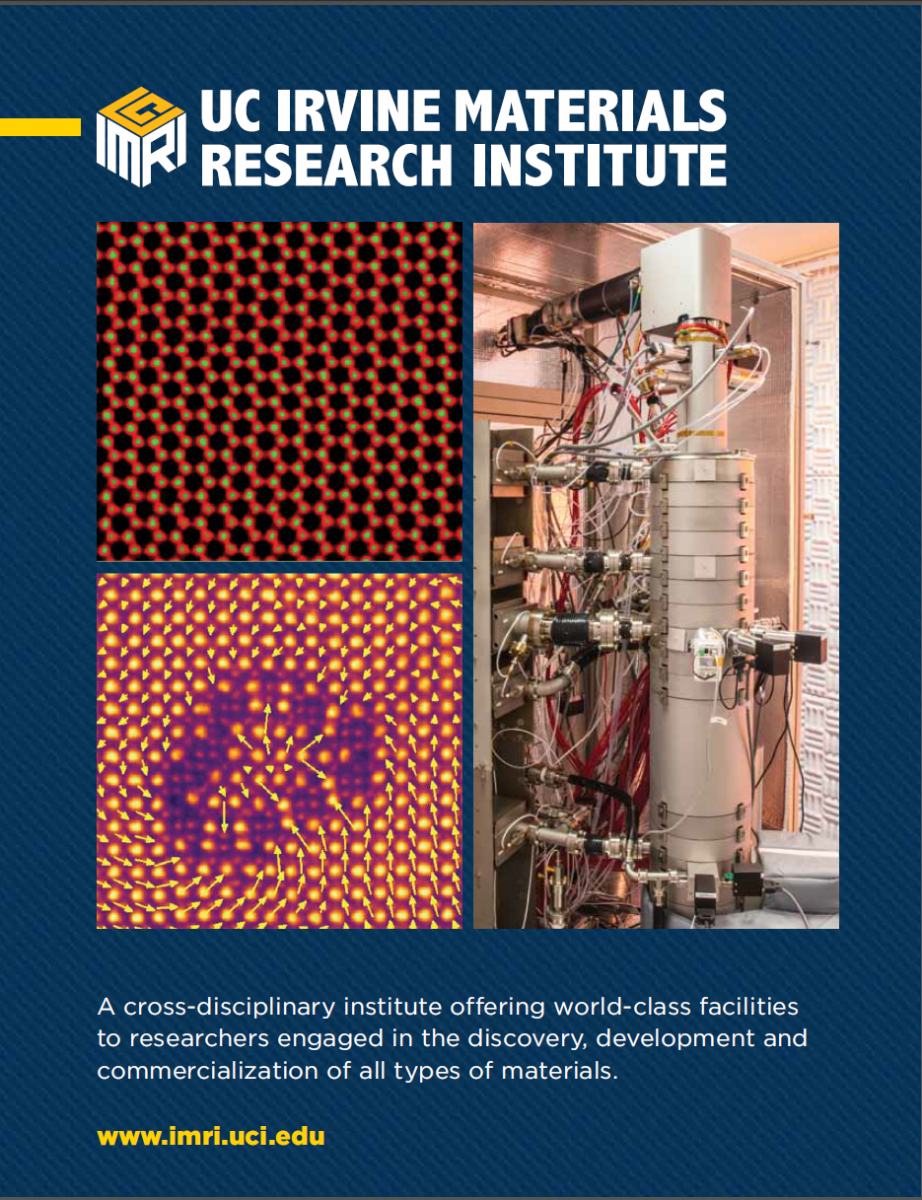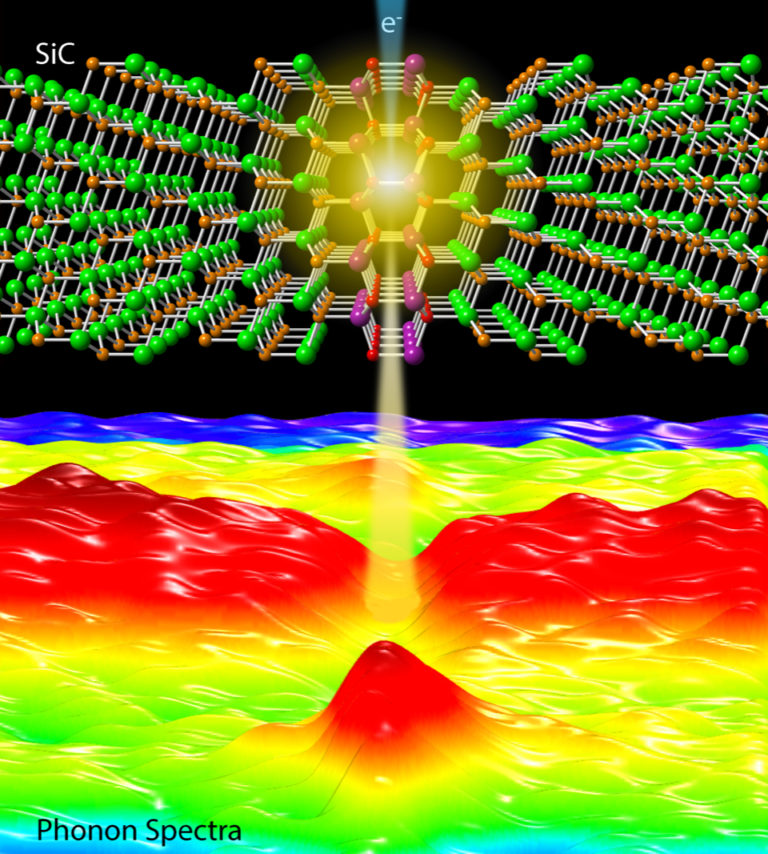About UC IMRI
The Irvine Materials Research Institute (IMRI) is an interdisciplinary special research program for materials research established under the Office of Research at the University of California, Irvine (UCI). As the cross-campus nexus for materials research and development, the primary mission of IMRI is to make UCI one of the world’s premiere institutes for materials research.
IMRI has two major goals: (1) To establish and maintain world-class facilities for the characterization and fabrication of materials and devices, and (2) to serve as a national center of excellence for materials research. IMRI partners with the newly established Center for Complex and Active Materials (CCAM), which is funded through the National Science Foundation’s Materials Research Science and Engineering (MRSEC) program.
IMRI operates materials characterization user facilities that are open to all researchers in academia, industry, governmental labs, and non-profit organizations on a recharge basis. The IMRI facilities offer state-of-the-art instrumentation for transmission electron microscopy (TEM), scanning electron microscopy (SEM and FIB), X-ray diffraction (XRD), surface science (e.g., XPS), elemental analysis (e.g., ICP-MS), and many other techniques, as well as laboratories for sample preparation and materials fabrication. IMRI is the Orange County and Southern California hub for materials characterization services. Please visit our Facilities pages to learn more and contact us today!
News & Updates
UCI scientists observe effects of heat in materials with atomic resolution
UCI scientists observe effects of heat in materials with atomic resolution Research will benefit design of future electronic and thermoelectric technologies Irvine, Calif., June 8, 2022 – As electronic, thermoelectric and computer technologies have been miniaturized...
UCI scientists measure local vibrational modes at individual crystalline faults
Breakthrough research made possible by advanced microscopic techniques Often admired for their flawless appearance to the naked eye, crystals can have defects at the nanometer scale, and these imperfections may affect the thermal and heat transport properties of...
Eutectic microstructure induced by flash sintering
By Yingjie Yang and Martha MecartneyMaterials Science and Engineering, UC Irvine LaPO4/Al2O3 eutectic microstructure produced by flash sintering, a process that uses an electric field to enhance densification at lower temperatures and shorter processing times....
Structural characterization of quantum dot superlattice by electron tomography
This study used the GrandARM to make a tomogram of a 3D quantum dot superlattice film. It’s state-of-the-art tomography using a full-tilt needle sample, with 0.65 nm resolution over a very large volume of 4.3 x 105 nm3. The full article can be found at J. Mater. Chem....
liquid phase electron microscopy
The website for the GRC on liquid phase EM is now up. The first conference will be January 26 – 31, 2020, Renaissance Tuscany Il Ciocco. More details can be found at the following website: https://www.grc.org/liquid-phase-electron-microscopy-conference/2020/...
IMRI special seminar:Molecular Design for Reliable Organic Electronics
IMRI special seminar:Molecular Design for Reliable Organic Electronics Dr. Xiaofeng LiuPrincipal ScientistCarbon Nanotube Technologies, LLC Monday, February 11, 2019, 1:30 pm2201 Natural Sciences II Abstract:Narrow bandgap conjugated small molecules and polymers are...
Upcoming Events
IMRI Open House
10 am – 2 pm
February 21, 2025
ISFD-16
in conjunction with
ISAMS-6
TBA
Check out our newsletter!
IMRI Brochure


